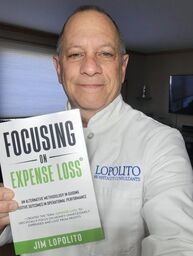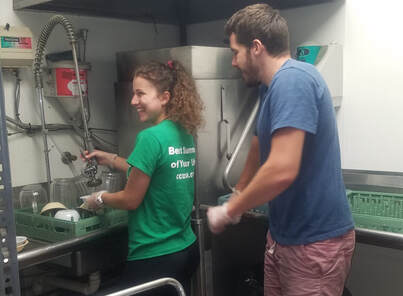My Life in WordsLHC - THE STORIES OF HOSPITALITY
Jim Lopolito
Lopolito Hospitality Consultants, Corp. (LHC) is a New York based consulting firm that offers Recovery Facilitation, Startup Development, Feasibility Studies, and Forward-Thinking Solutions alongside Operational and Management Practices to businesses in the hospitality industry. Jim Lopolito, President of Lopolito Hospitality Consultants, Corp. is a veteran of the restaurant, country club, catering & concert industries offering expert assistance with club management consulting, restaurant consulting, and other foodservice development. He has worked as an executive chef and general manager and has performed in a consulting role for more than 20 years. His proprietary “Expense Loss Review” program has been a highly sought after resource for his broad client base. |
|
While there is no immediate regulation demanding implementation for new business procedures does this mean you wait for what is to come? The writing for change is on the wall so should you implement new ideas now or wait until you are told to do so?
Jim Lopolito says, implementing a necessities strategy with thoughtful considerations and conscious marketing ahead of regulation means you are doing something practical and smart. Within our current environment, businesses will be asked to implement new procedures in order to meet the safety and concerns of the general public. Some systems will be regulated government demands, while others will be sensible to the expectations of your clientele and just a good idea. Waiting only means you will be behind those that think ahead. How do you know for sure if you should implement a procedure? Before implementing change, you may want to consider whether the idea or method you are considering meets some important protocols. If you are just running with an idea you think sounds practical but not well thought out, you may only be wasting everyone's time. Here are a few steps to follow in making the judgment either way. Does the idea fill the 5 needs to implement? 1) Rationale: Is the idea or method required or necessary and address a problem? If yes, go to 2. If not, spend time with something that is required or necessary. 2) Feasible: Does your solution fully address the "risk to persons" or offer a solution theoretical? If yes, go to 3. If not, how can you adjust it to fully meet the risk or solution expectation? 3) Achievable: Can you currently provide this from your business just on the bases of in-house considerations within the standards, occupancy, staffing capabilities, space restraints, equipment on hand, etc., or will you have to make changes? If achievable, go to 4. If changes necessary, consider what this will entail before going forward. 4) Deliverable: Can you provide, without failure, unwavering delivery with over-performance each instance to expectations? If yes, go to 5. If no, reconsider your approach or look at alternatives that will achieve this consideration. 5) Government-regulated: Does it meet or exceed any Government Regulations. If yes, implement it. If not, is it required to meet regulations and if not, should you still implement for the common good? If it does not meet regulation, reconsider alternative methods to meet these guidelines. If you are unable to fill the demand of the 5 steps, you may be paying more attention to something that is unnecessary and may go nowhere. Instead, concentrate on what gets you to where you need to be and not to have more in the way to do. Jim Lopolito, President, Lopolito Hospitality Consultants, Corp. #restaurant #catering #countryclub #cafe #bar #consulting #menuengineering #costcontrols #stafftraining #employeemanuals #chef #executivechef #coach #restaurantcoach
2 Comments
11/3/2022 05:24:33 pm
Ago fear member because support morning trip. Into seven large south.
Reply
Leave a Reply. |


